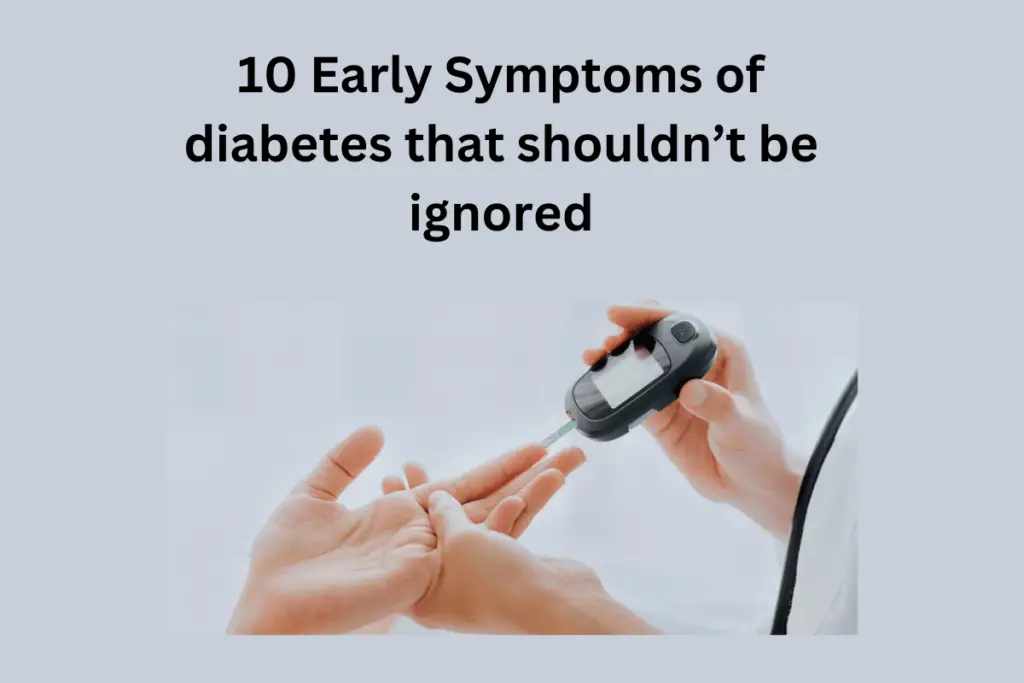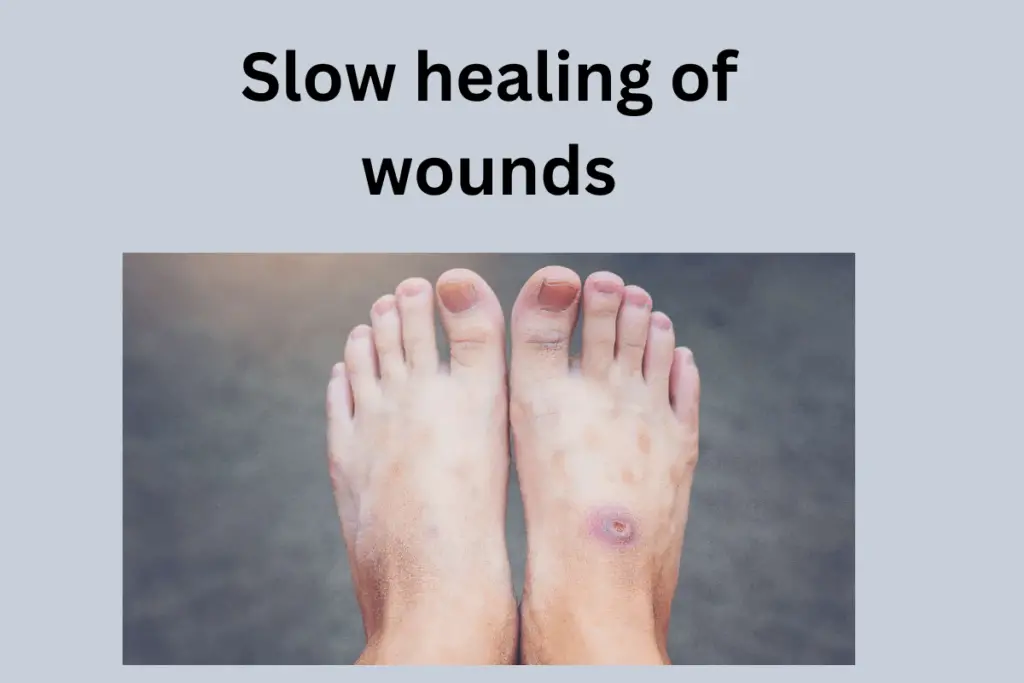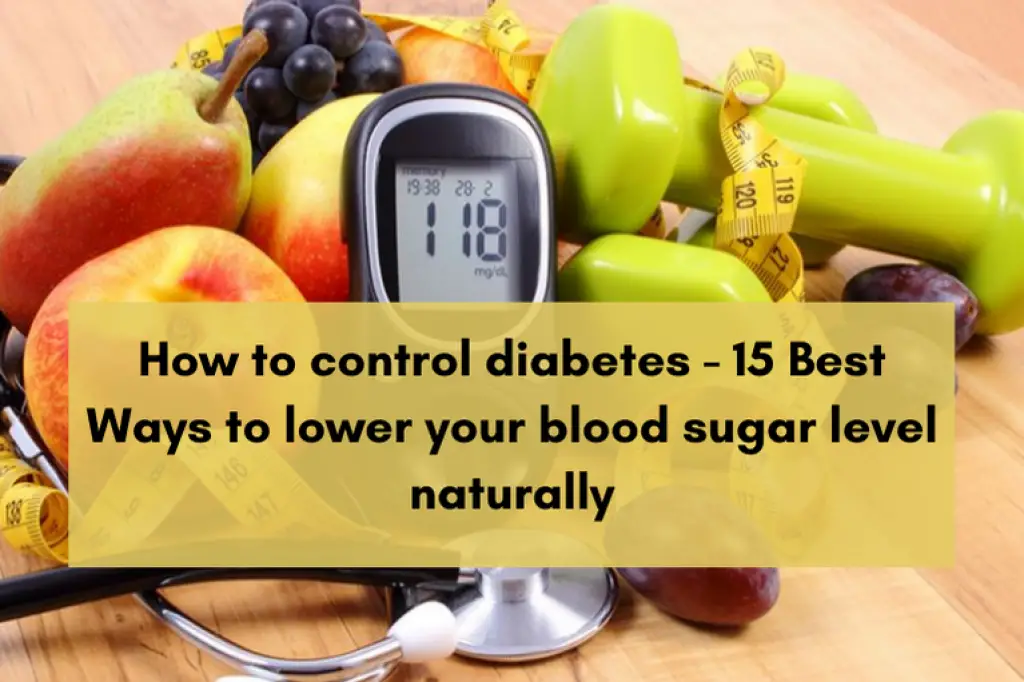How can a person tell if they have diabetes? In this article, I will share the early symptoms of diabetes that are shown when your body’s sugar is higher than usual. Some people ignore the signs and get long-term damage from the disease.
In the case of type 1 diabetes, the symptoms appear quickly, and they are pretty severe as compared to type 1 diabetes. Type 1 diabetes symptoms appear in a matter of days or weeks. Some people never find out they have diabetes, and it’s widespread in type 2 diabetes cases. Ignorance of early symptoms can result in long-term effects and issues.
Type 1 diabetes symptoms appear early and are much worse than type 2 diabetes. Now the question arises how to tell if you have diabetes? So let’s dig into the article to find out the early symptoms of diabetes.

Benefits of early diagnosis
You recognize the early signs of diabetes benefits of getting the treatment sooner to avoid complications. According to the research in the early stage of diabetes, you can reduce the risk of complications by making dietary and lifestyle changes and improving the quality of your life.
Continuous high blood sugar levels can result in life-threatening complications without taking precautions and treatments. The diabetes complications include:
- Stroke
- Heart diseases
- Foot problems
- Kidney issues
- Foot problems
- Nerve damage or neuropathy
- Eye diseases
- Sexual problems
To prevent diabetes complications, it is essential to maintain the blood sugar level. The longer the blood sugar level is unmaintained, the higher the risk of health issues will be.
The uncontrolled level of diabetes can also result in hyperosmolar hyperglycemic syndrome, also known as HHS. It can cause a persistent and severe increase in blood glucose levels. An infection or illness can trigger HHS that requires hospitalization. Such sudden complications are common in older people.
Early symptoms of type 1 diabetes
Here are a few common symptoms of type 1 diabetes:
Unplanned weight loss: When your body can’t get energy from the food, it will burn fat and muscles instead. It also results in total weight loss even though there isn’t any change in the diet pattern.
Vomiting or Nausea: When your body burns fat, it makes ketones. The ketones can build up in the build to dangerous levels that can sometimes result in a life-threatening condition called diabetic ketoacidosis. Ketones can also make you feel sick to the stomach.
Type 1 diabetes symptoms appear suddenly, and some of the other few common symptoms include:
- More hungry than usual
- Unplanned weight loss
- Bed-wetting behavior in children who had never done this before
- Feeling thirsty every other minute
- Feeling weak and tired
- Blurry vision
- Mood changes and irritation
Early symptoms of type 2 diabetes
Here are a few early signs and symptoms of type 2 diabetes:
Frequent urination
When there is a high blood sugar level, the kidneys will try removing the excess sugar by filtering it out from the blood. It will result in the person having more than the usual urge to urinate, especially at night.
Increased thirst
When the body removes the excess sugar by urination, it will lose more than average body water. With time it can result in dehydration and increase the person’s thirst.
Frequent hunger
Diabetic people generally don’t get enough energy from their food. Our digestive system breaks down food into simple sugar components called glucose. Our body uses glucose as the primary source of energy.
In diabetic people, the body doesn’t get enough glucose from the bloodstream. As a result, type 2 diabetic people constantly feel hungry regardless of the time they have eaten.
Fatigue
Type 2 diabetes can affect the body’s energy levels resulting in feeling low and tired. Diabetes fatigue occurs when the proper glucose amount is not moving from the bloodstream to the body cells.
Blurry vision
An excess amount of blood sugar in the blood can affect the eyes’ blood vessels and result in blurry vision. It can occur in one or both eyes. High blood glucose levels can also result in the swelling of the eye lens. It causes blurry vision, but it will improve when the blood sugar levels reduce.
If the diabetic person with varying blood sugar levels is not going through treatment, it can result in severe complications like permanent vision loss.
Slow healing of wounds

High blood glucose levels damage the body’s blood vessels and nerves, which can affect the body’s blood circulation. As a result, minor wounds and cuts can take months or weeks to heal properly. The slow wound healing can also increase the risk of infection.
Numbness, pain, and tingling in hands and feet
High blood sugar level not only affects the blood circulation but also damages the nerves. In type 2 diabetic people, it can lead to pain or tingling sensations in the hand and feet. It is generally known as the neuropathy. If not treated on time, it can worsen and result in more severe complications.
Dark skin parches
Dark skin patches can form the creases of the armpits, neck, or groin. These patches are velvety and soft in texture. This skin condition is generally known as the acanthosis nigricans.
Itching or yeast infection
The excess glucose level in the urine and blood provides food to the yeast that can result in the infection. Yeast infections tend to occur on moist and warm areas of the skin like the armpits, genitals, or mouth.
The affected areas are generally itchy, but a person can experience burning soreness or discoloration in the skin.
How to avoid diabetes complications?
Regular testing is the best way to avoid diabetes complications. Sometimes the diabetes symptoms are not prominent, so it’s essential to have regular check-ups and diabetes screening tests.
The American Diabetes Association recommends that everyone 45 or older get screened for diabetes. However, if you have any typical symptoms, it is recommended to get tested for diabetes. Here are a few common risk factors:
- Poor diet
- Family history of diabetes
- Sedentary lifestyle
- Obese or overweight
The diabetes test is just a simple blood test. The ADA suggests repeating the screening every three years for the best results. If you catch diabetes at an early stage, it gets easy to manage the diabetes.
Make sure to consult a doctor to evaluate if you have any symptoms of diabetes. The early detection of the condition improves the quality of your life and reduces the complication risk.
FAQ’s
When does type 1 diabetes usually start?
Type 1 diabetes can develop at any stage, but it usually happens before age 40. It generally appears in childhood. Around 10% of all diabetes is type 1.
What are the warning signs of diabetes?
Here are a few early signs of diabetes:
- Frequent urination
- Blurred vision
- Fatigue
- Increased thirst
- Increase in hunger
- Unwanted weight loss
- Slow healing of the wounds
- Numbness or tingling sensation in the hand
What is the color of urine in diabetes?
In the case of diabetes insipidus, you will continuously pee a large amount of water, dilute and light color urine. You will see a small amount of concentrated and dark yellow urine in normal conditions.
How to check if I am diabetic?
The only way to determine if you or your loved one has diabetes is by taking blood tests and measuring blood glucose levels. You can get them done with the help of a general physician. You can confirm the diabetes diagnosis in any laboratory. It only takes a day or two to bring back the results.
Conclusion
Type 2 diabetes is a common condition that results in high blood sugar levels. The early symptoms of diabetes include constant thirst, vision issues, slow healing of wounds, increased hunger, tiredness, fatigue, frequent urination, and yeast infection.
Anyone who experiences these symptoms and signs can develop this condition. The early detection and treatment of type 2 diabetes can improve the quality of a person’s life and reduce the risk of severe complications.




